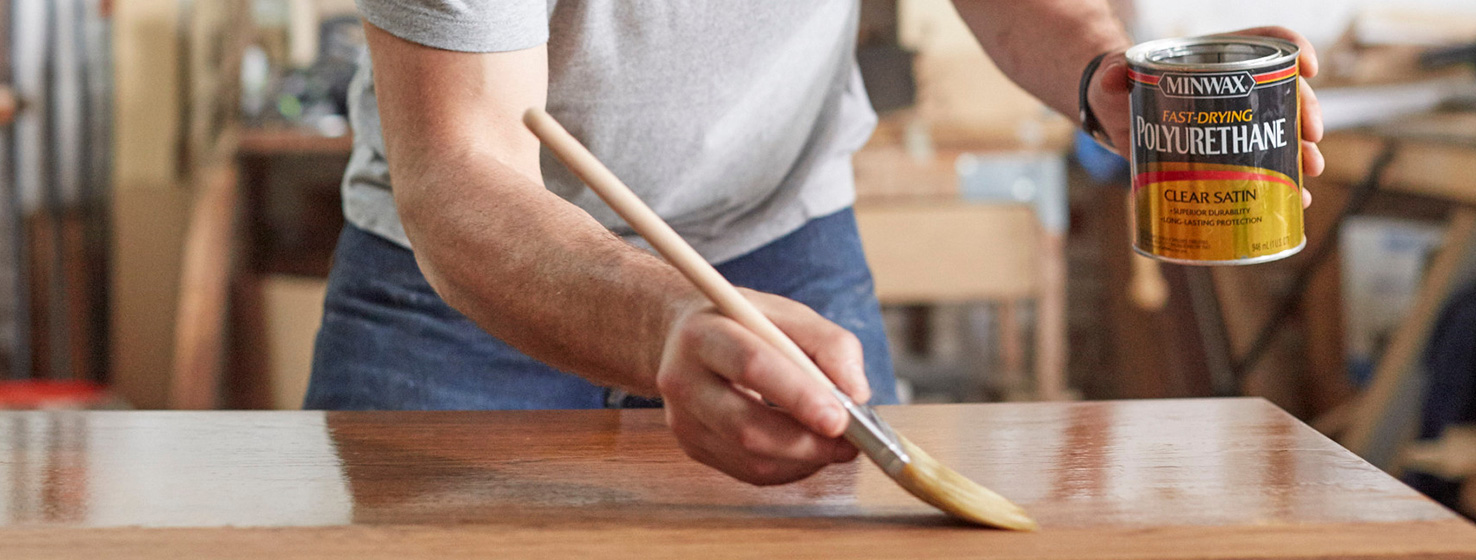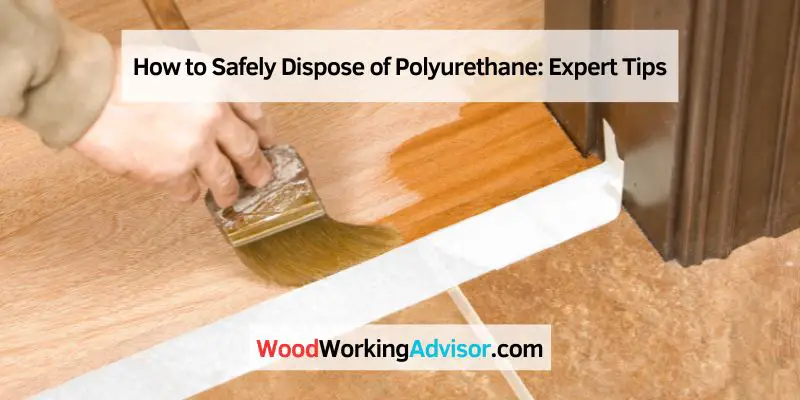To dispose of polyurethane, take it to a local recycling center or hazardous waste facility for proper disposal.
Understanding Polyurethane
Looking for the best way to dispose of polyurethane? It’s important to understand that polyurethane materials must be disposed of properly to avoid environmental harm. Reach out to your local waste management facility for guidance on safe disposal methods to ensure you’re following the right steps.
Polyurethane is a versatile material that is commonly used in various applications, from construction to furniture manufacturing. It is a type of synthetic resin that is known for its outstanding durability, flexibility, and resistance to wear and tear. If you have polyurethane items that you need to dispose of, it is important to understand the nature of this material and the proper disposal methods. In this article, we will delve into the world of polyurethane and provide you with the necessary information on how to dispose of polyurethane in an environmentally friendly manner.
What Is Polyurethane?
Polyurethane is a type of polymer that is created through a chemical reaction between polyols and isocyanates. This reaction results in a material that has an incredible range of properties, making it suitable for a wide variety of applications. Polyurethane can be found in various forms, including foams, elastomers, and coatings. Its versatility and functionality have made it a popular choice for many industries, including automotive, construction, and electronics.
Common Uses Of Polyurethane
Polyurethane is widely used in a multitude of applications due to its exceptional properties. Here are some of the most common uses of polyurethane:
1. Insulation: Polyurethane foam is renowned for its excellent insulating properties, making it an ideal material for insulation in buildings and appliances.
2. Furniture: Polyurethane foam is often used as cushioning material in furniture, providing comfort and durability.
3. Automotive: Polyurethane is used in car parts such as bumpers, seats, and dashboards, as it offers impact resistance and enhances comfort.
4. Coatings: Polyurethane coatings are used to protect surfaces from abrasions, chemicals, and weathering.
5. Footwear: Polyurethane is frequently used for making shoe soles, as it offers a good balance of durability and flexibility.
Proper disposal of polyurethane is crucial to minimizing its impact on the environment. Now that we have a better understanding of polyurethane and its common uses, let’s explore the appropriate methods for disposing of this material responsibly.
Potential Hazards
Polyurethane is a commonly used material in many industries, but its disposal can pose potential hazards to both the environment and human health. It is important to understand the various risks associated with polyurethane disposal in order to handle it safely and responsibly.
Environmental Impact
Polyurethane disposal can have a significant impact on the environment if not done properly. The material is non-biodegradable, meaning it does not break down naturally over time. This can lead to long-term pollution and accumulation of polyurethane waste in landfills and water bodies.
The manufacturing process of polyurethane involves the use of isocyanates, which are highly toxic. When polyurethane is disposed of inappropriately, these chemicals can leach into the soil and contaminate groundwater. This can harm aquatic ecosystems and pose a risk to wildlife that depends on these water sources.
Additionally, improper incineration of polyurethane can release harmful pollutants into the air, contributing to air pollution and affecting both humans and the environment. These pollutants include volatile organic compounds (VOCs) and nitrogen oxide emissions, which are known to contribute to climate change and respiratory problems.
Health Risks
Prolonged exposure to polyurethane can have detrimental effects on human health. One of the main concerns is the release of isocyanates during the disposal process. Isocyanates can cause respiratory issues, including asthma, coughing, wheezing, and shortness of breath. These chemicals can also irritate the skin and eyes upon contact.
In addition to isocyanates, the breakdown of polyurethane can release other toxic substances, such as formaldehyde and heavy metals. These substances can pose serious health risks to individuals exposed to them, including neurological disorders, liver damage, and even cancer.
To minimize the health risks associated with polyurethane disposal, it is crucial to follow proper safety procedures and use protective equipment, such as gloves and masks when handling or disposing of this material.
In conclusion, the improper disposal of polyurethane can have detrimental effects on both the environment and human health. It is essential to take the necessary precautions and follow appropriate guidelines to ensure its safe disposal, ultimately minimizing the potential hazards it poses.

Safety Guidelines For Disposal
Dispose of polyurethane safely by following these guidelines:
1) Always check local regulations for proper disposal methods.
2) Look for recycling programs that accept polyurethane.
3) Don’t burn or incinerate polyurethane as it releases toxic fumes.
4) Consider donating unused polyurethane products to minimize waste.
5) Use airtight containers to store polyurethane and keep it away from fire hazards. Remember to prioritize the safety of yourself and the environment when disposing of polyurethane.
Identifying The Type Of Polyurethane
Polyurethane is commonly found in various forms such as foam, adhesives, coatings, and sealants. To ensure proper disposal, it’s crucial to identify the exact type of polyurethane being discarded. Refer to the product label or safety data sheet for information about the specific type of polyurethane, as the disposal method may vary based on the formulation.
Recommended Disposal Methods
When it comes to disposing of polyurethane, following proper safety guidelines is essential to protect both your health and the environment. Take the necessary precautions to handle polyurethane waste responsibly. Here are some recommended disposal methods:
- Contact Local Authorities: Reach out to your local waste management or environmental agency to inquire about regulations and disposal guidelines specific to your area.
- Hazardous Waste Facilities: If the polyurethane waste is deemed hazardous, it should be taken to a designated hazardous waste disposal facility. These facilities are equipped to handle and manage potentially harmful materials safely.
- Recycling Centers: Some polyurethane products may be recyclable. Check with local recycling centers to determine if they accept polyurethane materials or have any specific requirements for recycling.
- Professional Disposal Services: Engage professional waste disposal services that specialize in handling hazardous or industrial waste, especially if the volume of polyurethane waste is significant.
Disposal Options
When it comes to disposing of polyurethane, it is important to consider the most responsible and environmentally-friendly methods. Proper disposal not only ensures the protection of our planet but also adheres to legal regulations. In this article, we will explore two effective disposal options for polyurethane: recycling and specialized waste disposal facilities.
Recycling
Recycling is a sustainable option for disposing of polyurethane products. Through recycling, these materials can be transformed into new products, reducing the demand for raw materials and decreasing the strain on our natural resources.
When recycling polyurethane, it is crucial to first determine whether the product is recyclable. Not all polyurethane products can be recycled, as some may consist of mixed materials that are difficult to separate. However, certain types of polyurethane, such as rigid foams and flexible foams, can typically be recycled.
| Steps for Recycling Polyurethane |
|---|
| 1. Check if the polyurethane product is recyclable. |
| 2. Separate the polyurethane from any non-recyclable materials. |
| 3. Contact local recycling centers to inquire about their polyurethane recycling programs. |
| 4. Ensure that the polyurethane is clean and free of contaminants before submitting it for recycling. |
| 5. Follow any specific guidelines provided by the recycling center. |
Recycling polyurethane not only reduces waste but also contributes to the development of a circular economy, where materials are reused to their fullest potential. By participating in recycling initiatives, you can actively contribute to a greener and more sustainable future.
Specialized Waste Disposal Facilities
If recycling is not an option for your polyurethane products, you may need to consider specialized waste disposal facilities. These facilities are equipped to handle the proper handling and disposal of substances that cannot be recycled.
Specialized waste disposal facilities utilize safe and controlled methods to handle and treat polyurethane waste. They have the necessary equipment and expertise to manage hazardous or non-recyclable polyurethane materials. These facilities ensure that the waste is properly contained, preventing any potential harm to the environment or human health.
- Research and identify specialized waste disposal facilities in your area.
- Contact the facility for guidance on how to properly dispose of your polyurethane products.
- Follow the instructions provided by the facility to ensure safe and compliant disposal.
It is crucial to follow proper disposal methods to protect our environment and promote sustainability. By choosing the appropriate disposal option for your polyurethane products, you can play a significant role in reducing waste and preserving our planet for future generations.
Best Practices
Polyurethane is a commonly used material in various industries due to its versatility and durability. However, when the time comes to dispose of polyurethane products, it is important to follow best practices to ensure minimal environmental impact and the safety of those involved.
Consulting With Environmental Agencies
Before disposing of polyurethane, it is advisable to consult with local environmental agencies or waste disposal authorities. These organizations have the expertise and knowledge to guide you on the proper methods and facilities available for safe disposal. They can also provide information on any specific regulations or guidelines that need to be followed in your area.
Tips For Safe Handling And Storage
When it comes to handling and storing polyurethane, there are a few important tips to keep in mind:
- Wear appropriate personal protective equipment (PPE) such as gloves, goggles, and masks to protect yourself from potential hazards.
- Store polyurethane products in a cool, dry, and well-ventilated area to avoid degradation.
- Avoid direct exposure to sunlight or extreme temperatures, as these can affect the integrity of the material.
- Keep polyurethane away from open flames or sources of ignition, as it is flammable.
- Ensure proper labeling and identification of polyurethane products to prevent accidental misuse or mixing with incompatible materials.
By adhering to these tips, you can minimize the risks associated with handling and storing polyurethane, promoting a safer working environment.
In conclusion, disposing of polyurethane requires careful consideration and adherence to best practices. Consulting with environmental agencies and following safe handling and storage tips can help ensure the proper disposal of polyurethane products and minimize environmental impact.

Credit: www.sherwin-williams.com
Frequently Asked Questions For How To Dispose Of Polyurethane
Is Polyurethane A Hazardous Waste?
Polyurethane is not considered a hazardous waste.
Can Polyurethane Be Put In a Recycle Bin?
Polyurethane cannot be put in the recycle bin. It is difficult to recycle and often ends up in landfills. Look for specialized recycling facilities or proper disposal methods instead.
Can Polyurethane Be Recycled?
Yes, polyurethane can be recycled. It is a versatile material that can be broken down and transformed into new products. Recycling polyurethane helps to reduce waste and conserve resources.
Can Water-Based Polyurethane Go Down Drain?
Yes, water-based polyurethane can go down the drain without causing harm. It is water-soluble and environmentally friendly, making it safe for disposal in normal plumbing systems.
Conclusion
Disposing of polyurethane requires proper care and adherence to environmental regulations. By utilizing recycling facilities and hazardous waste collection programs, individuals can minimize the negative impact on the environment. It’s essential to follow recommended disposal methods for a sustainable and eco-friendly approach.
Your contribution makes a difference in protecting our planet.


